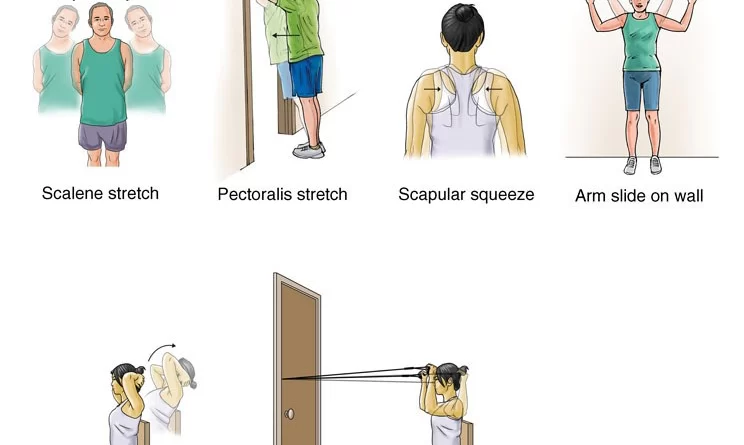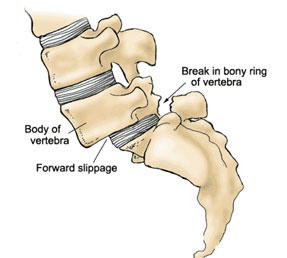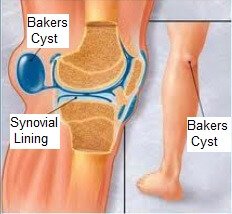13 Best Exercise for Thoracic Outlet Syndrome
Table of Contents
Introduction
Exercise can play a crucial role in managing thoracic outlet syndrome. The most appropriate exercises for thoracic outlet syndrome generally aim to improve posture, strengthen the muscles around the shoulder girdle, stretch tight muscles, and enhance overall flexibility.
The ribcage is the ring formed by the upper ribs, just below the collarbone. Thoracic outlet syndrome (TOS) happened when the rib and clavicle bone or neck muscles at the top of the outlet pinch nerves or blood vessels of the brachial plexus. Compression of the thoracic outlet can cause the patient pain, weakness, numbness or tingling, discoloration, swelling, muscle wasting, swollen veins, cold hands, and in severe cases, an aneurysm or embolism. You can be sure that only 1-2% of breast discharge cases are serious. Exercise can make our shoulder and scapular muscle strength and increase strength of these muscles.
There are mainly three types of thoracic outlet syndrome and the symptoms depend on the type of syndrome. The types of this syndrome are:
Neurogenic thoracic outlet syndrome: This is the most common type of thoracic outlet syndrome, usually affecting 95% of people. It occurs when the thoracic outlet nerves (ie brachial plexus nerves) are compressed.
Venous thoracic outlet syndrome: This type of thoracic outlet syndrome occurs when one or more veins, such as the subclavian vein, the axillary vein below the collarbone, or the collarbone, are compressed. This is about 3-5 percent of cases.
Thoracic artery leak syndrome: This is the rarest and most dangerous arterial thoracic leak syndrome, caused by affecting arteries such as the subclavian artery and the axillary artery below the collarbone, often causing an aneurysm. Chest outlet syndrome is rare, only 1-2% of people suffer from this disease.
Symptoms
Seen the change in the color of the hands and fingers.
you can feel sensitivity to cold in the hands and fingers.
Swelling, heaviness, “pins and needles” sensation might feel or numbness, and poor blood circulation in the arms, hands, and fingers.
Cold fingers, hands, or arms
Hand and arm pain
The present bluish discoloration(cyanosis)in your finger one or more fingers and the entire hand.
Weak or abnormal pulse in the affected arm
Causes of thoracic outlet syndrome
Injuries: Injury of collarbone (clavicle), or other injury can leave scar tissue and inflammation.
Bad or poor posture habits: When your shoulders become slump due to any habit, your collarbones can move out of place and press on your nerves it developing the symptoms. when your shoulder muscle weakens it develops bad posture.
Repetitive stress: It can affect people who move performed their arms in one motion in a continuous way over and over again.
sometimes some patient is born with an extra rib which causes thoracic outlet syndrome.
Obesity: Excess weight or overweight can put stress on the muscles that support your collarbones.
Pregnancy: When your joint becomes lost so changes of TOS.
Sleep disorders
Tumors: which leads to thoracic outlet syndrome (tumor present in upper your upper chest)
Stress or depression
Best Exercise for Thoracic Outlet Syndrome
Scalene stretch
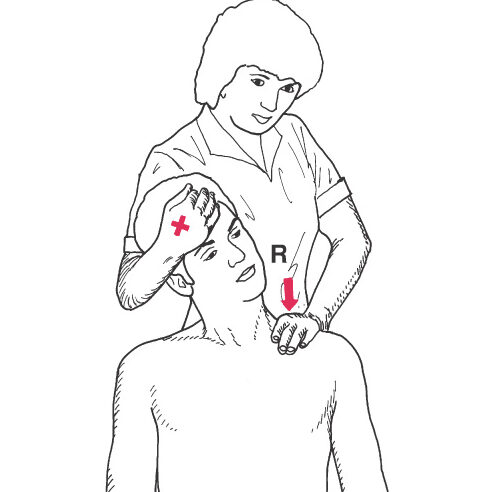
You should start by sitting upright in a chair with your feet flat on the floor.
You can put the pillow behind your back the support your back, which is not necessary.
Next, performed side flexion of your head to the left side while keeping your head straight so that You should feel a stretch in the right side of your neck. If it is painful, lighten the stretch or stop.
Hold this scalene stretch for 30–60 seconds which is necessary. Then, change to the other side.
If this stretch aggravates the symptoms such as pain so you can stop this stretch.
Pectoralis stretch
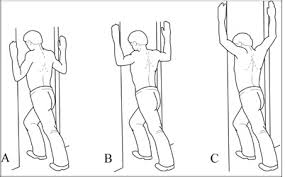
For pectoralis stretch, you should take a sitting position. you should put the pillow behind the back.
You can take this stretch by the self or by physiotherapy. If you are not comfortable so you can take the help of your health care.
Next, you should abduct your shoulder and place both hands behind your occiput.
Allow your body to lean forward to stretch your chest gradually.
Hold this pectoralis stretch for 20–30 seconds. the hold is necessary for this stretch.
If this stretch aggravates the symptoms such as numbness and tingling in your fingers, you are discontinuing the stretch, or modify it so you do only one arm at a time.
Standing rows

This is the one type of strengthening exercise. you need a there band or strengthening band for this exercise. Start with a standing position and wrap a resistance band around your palm. Alternatively, wrap the band around a doorknob and check the door which is close the door so it’s stable.
then you can tie or grasp the resistance band(according to your strength) with both hands and you should be in a standing position.
With elbows mildly flexed, gently pull the resistance band back through the elbow until your elbows are just passed the sides of your body. Use your scapular muscle (shoulder blades) to pull the bands back, rather than your arms. this action makes your scapular muscle strong.
Then, gently return the bands back to their original position.
Perform this strengthening exercise in 3-5 sets of 12-15reps.
this exercise increases the strength of the scapular muscle.
Quadruped thread the needle

For this exercise, you should wear comfortable clothes which make this exercise very easy. Start with quadrupled position, put your both palms flat on the floor or surface and your spine should be in a neutral position. your both knee stacked together.
Put one arm beneath your left arm and then put your whole body pressure on this shoulder and perform shoulder abduction with your other shoulder.
Allow your chest and right shoulder to touch the ground or floor surface. allowing your chest to rotate outward to the opposite side.
Then, bring your right arm back to the starting position and repeat the sequence.
Continue quadrupled thread of the needle for 12-15 reps. Then, performed it on another side.
Prone snow angel
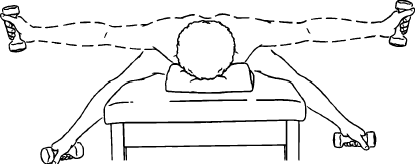
Prone snow angel exercises to start with the pron position or lie on your stomach with your forehead touching the ground, arms at the sides(palm facing down) on the mat or plinth for your comfort.
Gently raise your arms a few inches off to the surface of the mat or plinth by retracting your shoulder blades. This is the original position for the prone snow angel exercise.
Next, slowly performed the abduction of your both shoulder (perpendicular to your body). If you feel comfortable during this position, continue to bring your arms until they are over your head.
Then, slowly add your shoulder or back arms to the starting position. As you will notice, the movement of this exercise is similar to doing snow angels.
Perform 10-15repetation or as many as you can do if you feel comfortable while exercising.
If you feel it is too difficult to move your arms toward your head, you can perform this exercise by lifting your arms by your sides and holding this position for a few seconds. this exercise you can add it on as a progression exercise it is one type of strengthening exercise.
Resistance band pull-apart
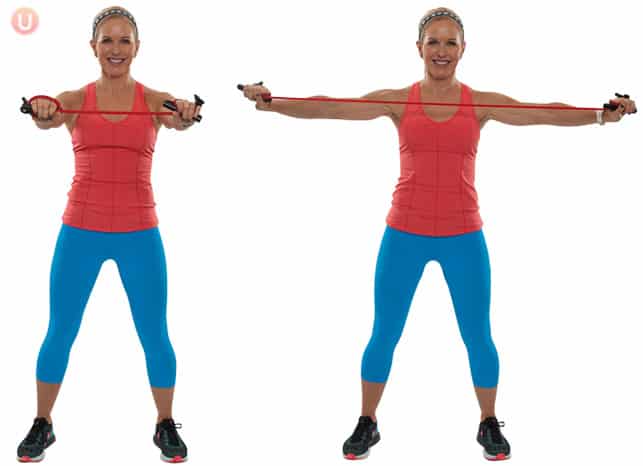
For this exercise, you need a resistance band(according to your strength), and then take a Standing position with your elbows extended around 90 degrees. Hold this resistance band for 5-10 seconds in front of you with both hands (palms facing up). your resistance band should be parallel to the ground.
Keeping elbows bent at the sides, slowly pull the band away from your abdomen by moving your arms outside of your body. considered squeezing your shoulder muscles together to initial the movement and keep your spine in the neutral position.
Slowly back to the original position and repeat this procedure again.
Perform 3-5 sets of 10 -15 repetitions daily.
Sitting back extension
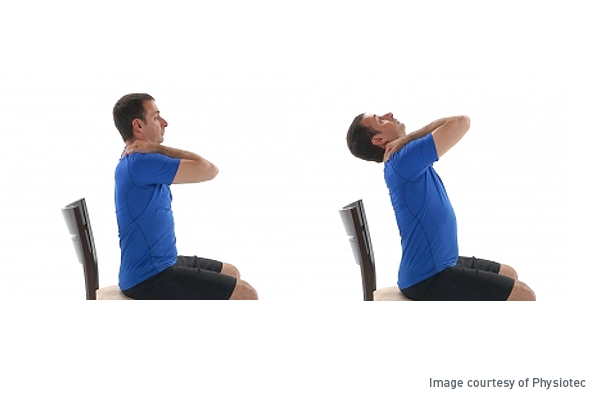
For this exercise you need a chair then you take a sitting position. the shoulder should be abducted around 90 degrees and the elbow can be flexed and both palms clasped together and placed on the occiput joint.
Gently lean back and take your head in an extension position until you feel a stretch in your chest when you feel stretch so you can hold this stretch for 30 seconds. you can also hold it for 60 seconds.
The sitting back extension exercise was performed in 2-4 sets of 10-15 repetitions.
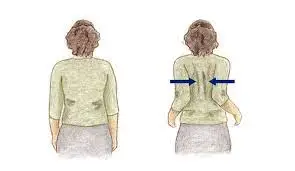
Scapular squeeze
In the scapular squeeze exercise, you can perform this exercise in sitting or standing in both positions with your shoulder in adduction then contract your shoulder blades together and hold for five or ten seconds. then back to the normal position.
repetition should be 20-25 per session do it twice a day.
Arm slides on the wall

This exercise is for the scapular muscle for this exercise you have to take a standing position on your face in front of the wall.
You have to place your palm on the wall and drag it as much as possible performed shoulder flexion and hold it for 4-5 seconds and your elbow should be extended.
slowly drag your shoulders on the wall if you are comfortable so you can hold it for a few seconds then back to the normal position.
you can perform it at your home with no need for extra things. Repetition should be 20-25.
Mid-trap exercise
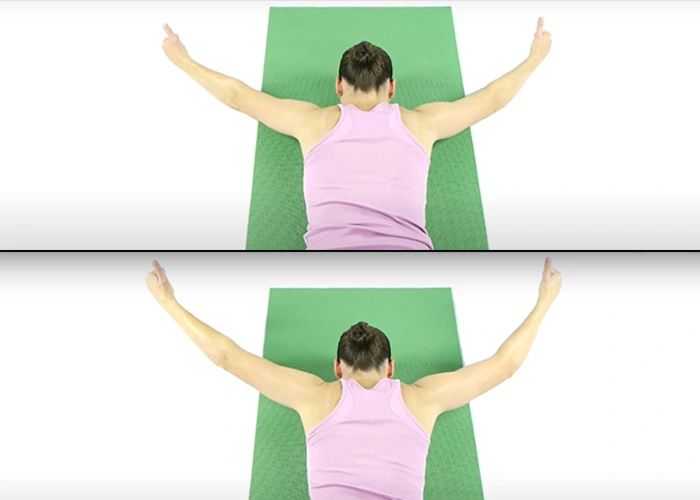
For this exercise, you have to lie on your stomach or prone position on a plinth or mat or on any type of cushion surface and put a folded pillow underneath your thorax which is not necessary. Put your shoulder in an abduction position into the 90-degree elbow should be extended and thumbs toward the sky.
Slowly raise your shoulder as you can toward the ceiling and then you should contract your shoulder blades together. Lower it slowly. try to complete three sets per day with 10 to 15 repetitions.
When you are comfortable with this exercise, then hold blank or full cans or small weights in both hands(weight cuff).
Isometric neck exercise
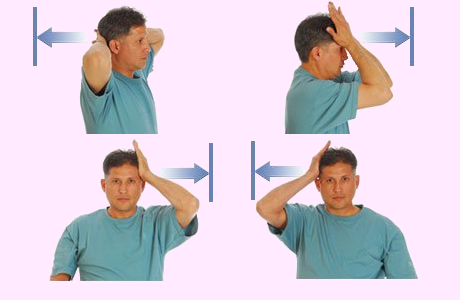
For isometric neck exercises, you should take a sitting position. you can put the pillow behind your back for support which is not necessary. then put your palm on your forehead and give some resistance against the neck movement. you have to hold this position for 5-10 seconds then relaxed.
After that, you have to put your palm side of your neck then give resistance against the side flexion movement of the neck and hold it for 5-10 seconds then back to the starting position.
After that, you have to put your palm behind your neck on the occiput and then give the resistance against the neck movement. hold it for 5-10 seconds then back to the starting position.
you should perform 7-10 repetitions per session.
Upper extremity neural mobilization
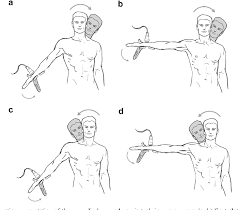
To start this exercise put your hand on a wall with your fingers pointing down. or you can use the supine position your shoulder should be 90-degree abduction and fingers pointing down. and your neck moves in the opposite direction.
After that Keep your shoulder down and put your arm as straight as possible.
From this position(hold the position), do neck-side flexion movement on both sides. this mobilization is first performed in front of your healthcare and then performed at your home.
Median nerve mobilization of fingers & head
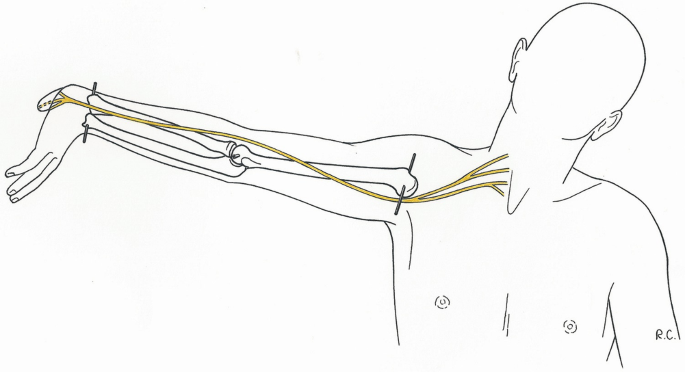
To mobilize the median nerve, you should first sit down, place your palm flat on the walls with your fingers facing straight ahead, and then extend your elbow.
Side flexed your neck (ear towards opposite shoulder) and extend your elbow slowly until a gentle stretching is felt over all anterior compartments.
Return to the starting position and repeat.
Note: However, it is important to note that exercise should be done under the guidance of a healthcare professional to ensure safety and effectiveness. They can provide an accurate diagnosis, individualized treatment plan, and specific exercises based on your condition and needs.
Benefits from exercise in Thoracic Outlet Syndrome:
Help to reduce the symptoms by increasing the thoracic outlet space
Help to stretch the compressed vessels
Helps to normalize their function
Gain affected muscle strength
Maintain good posture
Helps from recovery pain, tingling, and numbness sensation which are seen in TOS
Exercises to avoid if you are suffering from thoracic outlet syndrome:
You may need to stop some activities while recovering from neurogenic thoracic outlet syndrome, even though no activities are strictly prohibited. If you have arterial or venous thoracic outlet syndrome, it is very serious so you should first consult with a physician first or physiotherapist.
It is the common recommendation you should limit or avoid overhead activities or exercises that need lifting heavy objects(e.g., dumbbells, barbells, etc.) until your physiotherapist gives approval for this exercise.
During the healing period, it is important to take it gradually and avoid exaggerating it, which can make worsen your condition. you should consider your body and only complete movements that feel comfortable and are not painful movements.
Before you start your exercises considered this precaution:
Take Proper Warm-up of your muscles before starting any exercise: Warm up for the neck muscle and shoulder muscles with warm water or a heating pad set to low for about 10 to 15 minutes or until you feel normally warm. You should never feel too much hot, as this may result in a burn.
Give mild stretch: You can feel a force in your muscles during stretching exercise, but not ache while stretching. If stretching aggravates the painful movement, try not to go for more stretch and stop the stretch.
Provide proper hold to your stretches: Avoid “cross over” when you stretch.
You have to notice how you feel while stretching exercises: If your hand begins to feel cold, numb, or starts to prickle, quit stretching or stop sudden stretching.
FAQ
Thoracic Outlet Syndrome: chin tuck
Roll up a towel so it is about 5 to 7 centimeters thick.
take a supine lying position on the plinth and put the rolled towel under your neck. …
Gently, bringing your chin toward your neck.
be sure your head is put on the surface of the plinth.
Hold for about 6 seconds.
Repeat 8 to 12 times.
Start with shoulder and elbow exercises and also make your scapular muscle. You have to perform scalene stretch and pectoralis stretch at your home with hold it for 30-60 seconds. and focus on the scapular muscles, strengthening exercise, resisted exercise, and stretching exercise.
Massage and Thoracic Outlet Syndrome
Massage therapy is an effective treatment option for TOS that can help relieve pain, improve circulation, and release muscle tension in the affected area. Massage therapy can help mitigate the symptoms of thoracic outlet syndrome by addressing muscle tension and improving or increasing circulation in the affected area.
Physical therapy can help reduce pain through heat therapy, increase the strength of the scapular muscles, and improve the range of the shoulder joint. stretching exercise is very important for thoracic outlet syndrome. Physical therapy starts with the range of motion exercise of shoulder and scapular exercises, stretching of the pectoralis muscle and scalene muscle, and mobilization exercises.

